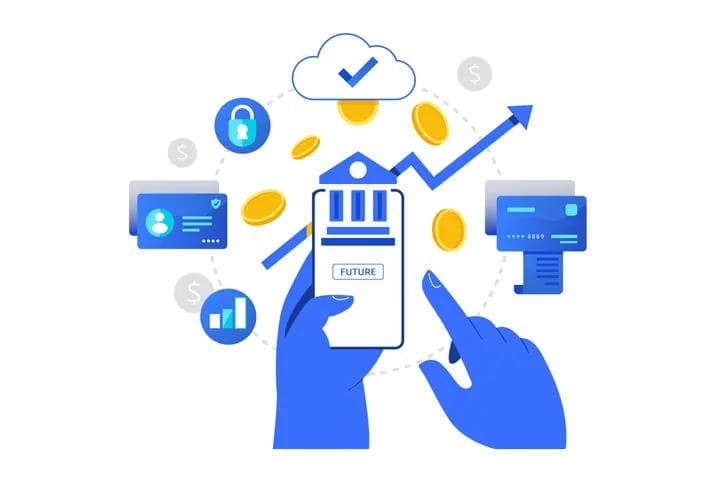Reconciling security, speed and service in the age of digital globalised banking
Reconciling security, speed and service in the age of digital globalised banking
Published by Gbaf News
Posted on April 22, 2020

Published by Gbaf News
Posted on April 22, 2020

By Henry McKeon, Innovation Architect at moneycorp,
As corporates’ supply chains and labour force are increasingly dispersed throughout industries and geographies, there is a greater need to ensure that speed and security does not compromise the bottom line of good customer service.
Speed is essential to service. Multinational corporates and SMEs alike want instant gratification that their money is where it needs to be at the right time, whether that be 7am GMT or 9pm CST, ensuring the highest levels of transparency and accountability. Strong and long-lasting business relationships have always depended on trust, but nowadays the transnational digital economy forces businesses to ensure that security, alongside speed are at the forefront of customer-relationship strategy.
In this sense, foreign exchange (FX) solutions are a prime example of the digital revolution, and cutting edge technology in action. For FX companies, client operations are reliant on individually designed, bespoke software that encapsulates both speed and security.
The components of speedy solutions
In terms of speed, multi-currency accounts offer efficiency when receiving payments in one currency but paying suppliers in another. Multi-currency accounts, that are addressable via a single IBAN, will help to simplify receiving money for customers and removes the dependency on referencing for auto allocation of incoming funds.
Another widely used component of rapid payment solutions are Application Programming Interfaces(APIs). These are integral to the instantaneous connectivity we have become so used to in the modern age. APIs allow us to make payments seamlessly, reaching the global marketplace at our fingertips, by transmitting information from one piece of software to another. This function enables credit checking, mobile banking, in app services and more.
The benefits for speed are incommensurable, APIs take down barriers when dealing directly with software. Moreover, they increase the avenues of communication with online platforms through integration, providing it with information to better serve your needs. FX providers can use APIs in a number of ways to enhance customer service, while still retaining speed and security. A prime example of this is the creation of online platforms that have the technology embedded, meaning FX deals and payments are integrated in one place. Thus, enabling clients to see both real-time cash positions and real-time market currency values on the same platform.
Nowadays, there is an increasing need for banks to adapt to particular market specifications. FX providers can do this by utilising a network of local banks to address access and licensing needs. Bulk payments, such as payrolls, are a good example of where digital solutions are leading the way for speed and security – automatic payment translation channels that span numerous countries ensure the most cost-effective payment routing.
The components of secure solutions
Execution determines the quality of a bespoke digital solution, and this is where security is paramount to customer service. Innovative micro-services now allow clients to pre-validate payment instructions on a global scale. Services are timely and secure, eliminating errors and delays, whilst ensuring high levels of straight through processing via data validation and data reconciliation. Payments can be automatically screened for compliance purposes so that they abide by global sanctions and AML requirements, which is increasingly critical to sellers on global marketplaces who have multinational buyers.
Parent-child accounts exemplify how innovative digital payment solutions can enhance security as well as efficacy. A parent-child hierarchy enables you to manage segregated sub accounts – an account’s activity is kept separate from the another’s FX and payments activity, whilst moving funds instantly between accounts. This is beneficial for those that pay or invoice a multitude of suppliers, employees and consumers, often in different currencies.
For example, a tax accounting firm could use the parent-child structure to administer each underlying insurance company as a segregated sub account. The tax firm can swiftly and securely login using just the one login credential to then switch into the segregated sub account, in order to deal with and pay for each underlying entity. A parent-child set-up platform allows for fluidity – instantaneously taking fees from lower levels,often in multiple currencies, and moving these to the top-level account.
Back to the drawing board: collaboration and customer service
However, with increased competitiveness in the payments space, price compression, and a consolidation of service providers, quality customer service over-arches the driving forces of speed and security. Technology is useless if it lacks specificity of purpose. Collaboration between consumer, client and payment solutions provider ensures this specificity.
Where challenger banks lack customer interaction, in order to compensate for tech advances, there is the parallel need to solidify the client experience, with real interaction with real people, whether that be over the phone or in person, or by a responsive social media community. An ongoing collaborative approach, from development to implementation, secures truly unique and flexible payment solutions, which work in practice.
Explore more articles in the Banking category











